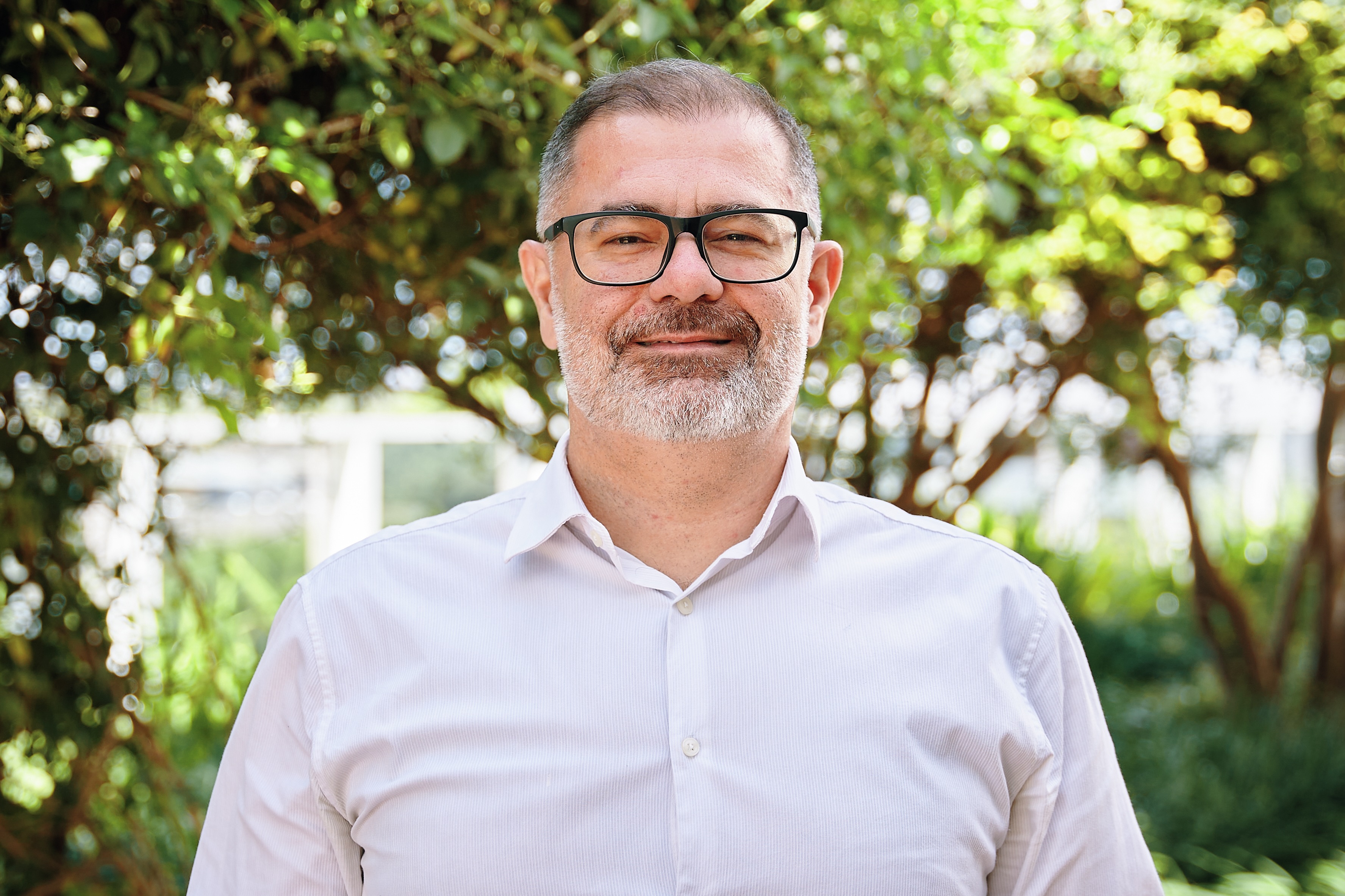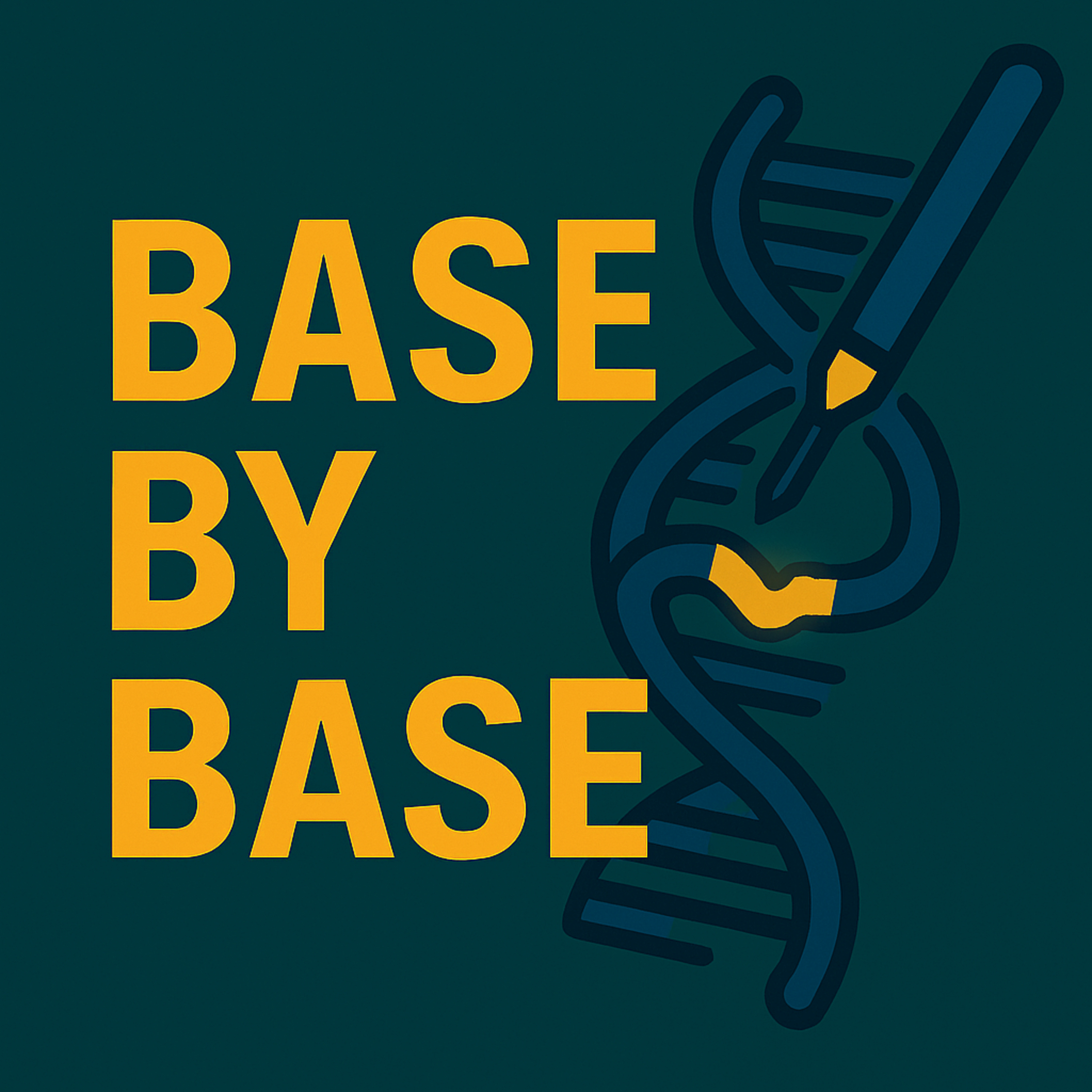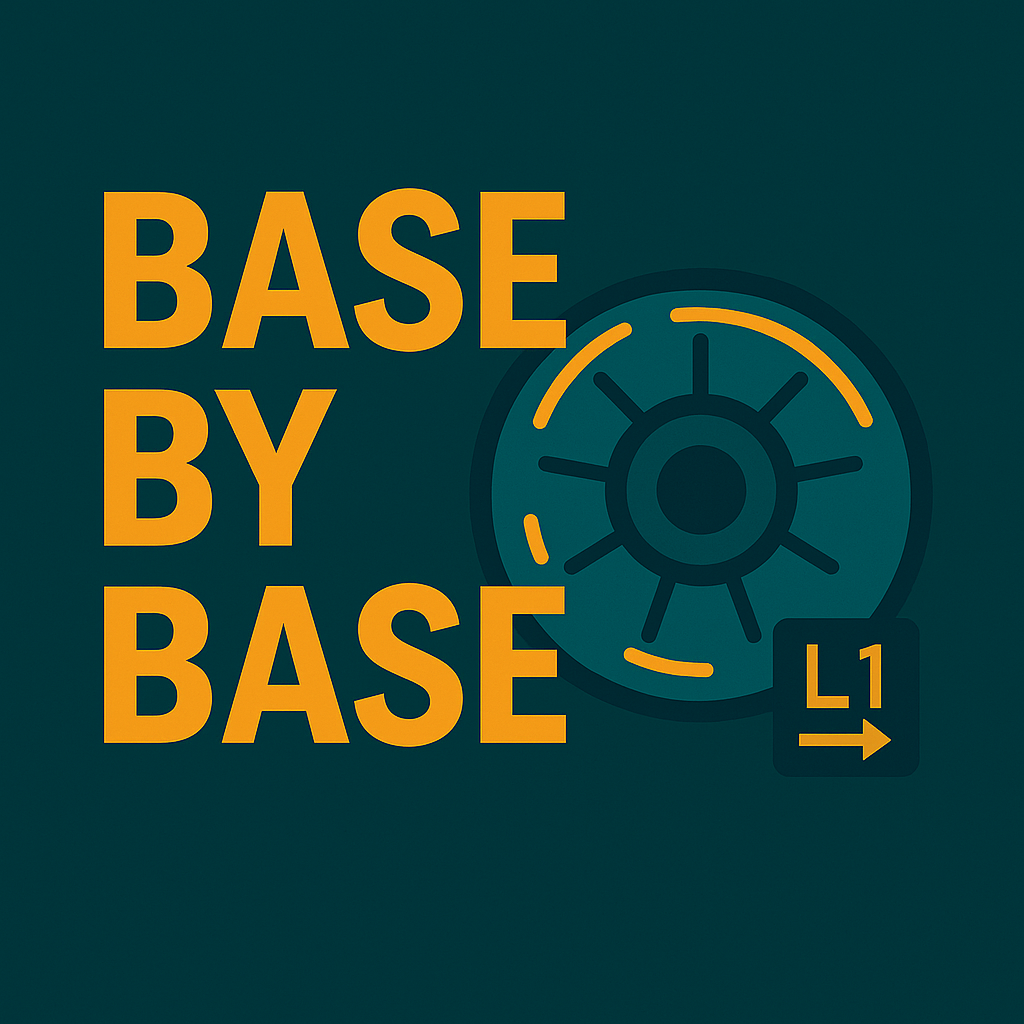Episode Transcript
[00:00:00] Speaker A: Foreign.
[00:00:14] Speaker B: Welcome to Base by Base, the papercast that brings genomics to you wherever you are. Thanks for listening and don't forget to follow and rate us in your podcast app. We're starting this deep dive with something that happens deep inside you. A real high stakes biological problem. I want you to picture your cell's protein fact.
[00:00:32] Speaker C: These are thousands of tiny machines, the ribosomes just flying along these messenger RNA tracks.
[00:00:39] Speaker B: It's like a high speed production line and most of the time it's absolutely flawless.
[00:00:44] Speaker C: But what happens when that line hits a. Well, a catastrophic stall. A problem with the RNA maybe? Or the cell is starved for nutrients. One ribosome just slams on the brakes.
[00:00:54] Speaker B: And the ribosome right behind it, well, it doesn't stop in time.
[00:00:57] Speaker C: It crashes. A direct collision.
[00:00:59] Speaker B: And that molecular car wreck, that's not just some small inefficiency. It is the signal for a massive cellular emergency. We're talking about a choice that determines the cell's fate, Right?
[00:01:09] Speaker C: A choice between life and death. Does the cell stop dividing or does it trigger its own self destruct program? Apoptosis?
[00:01:16] Speaker B: So here's the question that's really puzzled.
How does a purely physical event, this crash between two machines to form what's.
[00:01:24] Speaker C: Called a dism, how does that get translated into a chemical distress signal? How does the collision become chemistry?
[00:01:31] Speaker B: That exact question, that missing blueprint, is what we're diving into today. We're going to trace the molecules that sense this crash and sound the alarm for what's called the ribotoxic stress response.
[00:01:43] Speaker C: Before we really get into the weeds. And the structural detail is just stunning. We have to give credit where it's due.
[00:01:49] Speaker B: Absolutely.
[00:01:49] Speaker C: Today we're celebrating the work of researchers from Johns Hopkins University School of Medicine and the University of Munich's Gene Center. It's this incredible collaboration between biochemistry and structural biology and that finally cracked this problem.
[00:02:03] Speaker B: Okay, so let's set the stage. The main process we're talking about is the ribotoxic stress response, or rsr.
[00:02:08] Speaker C: And you'll see this kick in when cells are under, you know, major stress. Things like UV radiation, chemical toxins, anything.
[00:02:15] Speaker B: That messes up the protein production line and causes those traffic jams.
[00:02:19] Speaker C: Exactly. And the essential operator, the real decision maker in the rsr, is a kinase known as zk.
[00:02:25] Speaker B: Zk.
[00:02:26] Speaker C: Zakay is the hub. Once it's activated, it goes on to activate other major stress kinases you might have heard of like P38 and JNK.
And those are the guys who really pull the trigger on cell Cycle arrest or apoptosis.
[00:02:37] Speaker B: What's so interesting about ZK, though, is that it's not just waiting around for a signal.
[00:02:41] Speaker C: No, not at all. It's what we call constitutively interacting with the ribosomes.
[00:02:45] Speaker B: So even in a healthy, happy cell, ZK is already there.
[00:02:49] Speaker C: It's already there. Think of it like a security guard that's always on patrol right next to the assembly line. It's tethered to the 40s ribosomal subunit, just watching.
[00:02:59] Speaker B: But it's in an inactive state.
[00:03:01] Speaker C: Completely inactive. It only gets switched on. It autophosphorylates and then gets released to send out signals when that stress happens and the collision occurs.
[00:03:09] Speaker B: So that was the big mystery. We knew ZK was there, but what about the physical crash? Flips it switch. What's so special about two ribosomes stuck together?
[00:03:17] Speaker C: Well, the prime suspect for sensing that collision was another protein, A ribosomal protein called Rack1.
[00:03:24] Speaker B: Why Rack1?
[00:03:25] Speaker C: Location, location, location. It's conserved across eukaryotes, and structurally, it sits right at the collision interface. It's the perfect spot to act as a bridge, a scaffold for a signal.
[00:03:37] Speaker B: Okay, so let's get into the methodology, because trying to see this happen must be, well, incredibly difficult.
[00:03:43] Speaker C: It is. It's a huge technical challenge. The second ZA becomes active, it phosphorylates itself and poof. It's released from the ribosome.
[00:03:51] Speaker B: It's gone. A fleeting moment.
How do you get a high resolution picture of something that basically self destructs on activation?
[00:03:59] Speaker C: This is where the team got really clever. They used a combination of genetic and chemical tricks.
First, to keep Zihe in place, they engineered it to be kinase inactive.
[00:04:08] Speaker B: They broke its eject button.
[00:04:10] Speaker C: That's a perfect way to put it. They made these mutants like a T161A or a K45M mutant that can bind to the ribosome just fine.
[00:04:19] Speaker B: But they can't phosphorylate themselves.
[00:04:20] Speaker C: Right. So they can't leave. They're stuck there. Which lets you actually study the complex.
[00:04:24] Speaker B: Okay, so they've got the sensor locked in place. Now they need to create the crash itself in a controlled way.
[00:04:30] Speaker C: For that, they used a low dose of a chemical called anisomycin. It's a classic tool that's known to stall ribosomes and create these very stable disombes. They needed to see.
[00:04:39] Speaker B: And to see them, they turned to the big gun in structural biology.
[00:04:43] Speaker C: Cryo electron microscopy, cryo emergency. And the resolution they achieved was just phenomenal, down to 2.3 angstroms for parts.
[00:04:52] Speaker B: Of the ribosome, which is high enough to see the individual amino acid side chains. You can see exactly how these proteins are touching each other precisely.
[00:05:00] Speaker C: And they backed it all up with other techniques like clipsec, which actually maps where a protein is touching rna. So they had the structure and the sequence validation. They knew they were right.
[00:05:11] Speaker B: This is where it gets really, really cool. The structure reveals this elegant two part system. For zk, there's one part for just hanging on and another totally separate part for sensing the crash.
[00:05:21] Speaker C: Let's talk about the hanging on part first. The anchor ZK has two of them on its C terminal end. They keep it attached to the 40s subunit.
[00:05:28] Speaker B: The first one is called the ES27 pin.
[00:05:30] Speaker C: Right. It's a tiny little peptide motif that slots into another ribosomal protein, ES27. A key tryptophan residue, W768 really locks it in there. This is a general tether. And the second anchor, it's called the ES7 patch. It's a charged region that interacts directly with the ribosomal RNA itself.
[00:05:47] Speaker B: And if you break either of these.
[00:05:48] Speaker C: Anchors, ZK can't hold on. And if it can't hold on, it can't be activated later. The anchor has to be secure for the alarm system to work.
[00:05:55] Speaker B: So Zake is always anchored nearby. But what is the unique signal that only a two ribosome collision can provide? This is where rack one comes back in.
[00:06:03] Speaker C: It's all about rack one. The structure confirmed it is the collision scaffold. So ZK actually has two different ways it talks to rack one. Okay. The first is a general binding motif, a helix called the rih, or rack one interacting helix. This just helps keep it close to rack one on any ribosome.
[00:06:21] Speaker B: But that's not the actual switch.
[00:06:23] Speaker C: No, the true sensor, the collision specific switch, is another motif called the rim, the rack one interacting motif rim.
[00:06:30] Speaker B: And this has a specific sequence, right? Fpplic.
[00:06:33] Speaker C: That's the one. And this is the absolute key finding of the paper. This REM is strictly required for ZAC activation, but not for just binding in the first place.
[00:06:42] Speaker B: How did they show that?
[00:06:43] Speaker C: They mutated the key residues in the rim. Zac. It could still bind to the ribosomes just fine using its other anchors. But when they induced a collision, nothing.
[00:06:53] Speaker B: No downstream signaling.
[00:06:55] Speaker C: The alarm was silent. The RIM is the part that has to sense the collision.
[00:06:59] Speaker B: And the structure shows how the collision physically pushes the two rack 1 proteins, one from each ribosome, right up against.
[00:07:06] Speaker C: Each other, creating a Bridge a platform.
[00:07:09] Speaker B: And on that rack one platform, something remarkable happens.
[00:07:12] Speaker C: It forces two separate Zaka molecules, one from the stalled ribosome, one from the trailing one, into close proximity. Specifically, it forces their regulatory domains, these things called SAM domains, to snap together.
[00:07:24] Speaker B: They dimerize.
[00:07:25] Speaker C: They form an asymmetric head to tail dimer that physically bridges the two ribosomes. That damarization of the SAM domains is the activation signal.
[00:07:33] Speaker B: Wow. So it's pure mechanics. The physical force of the crash creates a new structure that forces these two domains together. And that's what flips the switch.
[00:07:42] Speaker C: It's an absolutely beautiful mechanism. It ensures the cell doesn't trigger this catastrophic response unless the stress is severe enough to cause an actual physical pile up.
[00:07:52] Speaker B: And as if that system wasn't controlled enough, they found one more layer of regulation. A safety break.
[00:07:57] Speaker C: They did. An abundant protein called SIR BP1.
[00:08:00] Speaker B: Okay, what does SIR BP1 do?
[00:08:02] Speaker C: It's basically a competitive inhibitor. It turns out SIR BP1 also have a motif that looks a lot like Zach's rim. That FPXL sequence.
[00:08:11] Speaker B: So it's competing for the same parking spot on our ACK1.
[00:08:14] Speaker C: Exactly. Under normal conditions, there's so much RBP1 around that it's hogging that binding site, keeping Z from getting too close to the switch.
[00:08:21] Speaker B: It's a gatekeeper.
[00:08:22] Speaker C: It is. And they proved it when they used Arnai to get rid of Serbp1. What happened?
[00:08:27] Speaker B: Zak activation must have gone up.
[00:08:29] Speaker C: It went way up. Even without much stress, it confirms STRBP1 is there to set a high threshold to prevent this whole pathway from firing accidentally.
[00:08:37] Speaker B: So putting this all together, what does it all mean? This is a complete mechanistic blueprint.
[00:08:43] Speaker C: It is. It tells us that the ribosome collision isn't just releasing zk. It's actively creating a unique platform that licenses ZK to become an active kinase through that forced SAM dimerization.
[00:08:56] Speaker B: And that really highlights how important this SAM domain is.
[00:08:59] Speaker C: It's functionally critical. And this is validated when you look at certain diseases where ZK is mutated. They found that pathogenic mutations like one called F368C happen right in the SAM domain.
[00:09:10] Speaker B: And what does that mutation do?
[00:09:12] Speaker C: It makes ZK hyperactive. It's normally switched on, and it completely bypasses the need for the ribosome or a collision at all.
[00:09:18] Speaker B: So a broken SAM domain means the safety is always off.
[00:09:21] Speaker C: Exactly. It tells you the the primary job of the SAM domain is to hold ZK in an inactive state. And that stability is only broken by the Force of the collision induced dimerization.
[00:09:31] Speaker B: And they could even pinpoint the specific amino acids at that SamSam interface that control the activity.
[00:09:37] Speaker C: Yeah, mutating 1K394DE completely kill the activation, probably because it prevents that stable dimer from forming. It really solidifies rack one and this competitive binding site as a major hub for stress signaling.
[00:09:51] Speaker B: Now, they did mention a limitation, something that's still a bit of a black box.
[00:09:55] Speaker C: Right. We know the SAM domains dimerize at the rack one bridge, but that's happening at the C terminal end of the protein. The actual kinase activity is way over at the N terminal end.
[00:10:05] Speaker B: So how does the signal get from one end to the other?
[00:10:08] Speaker C: That's the missing piece. How does that dimerization signal travel all the way to the kinase domain to trigger the autophosphorylation? That communication pathway is still dynamic and structurally unresolved.
[00:10:19] Speaker B: That sounds like the next big challenge.
[00:10:21] Speaker C: It is. But the take home message for now is just foundational. The ribosome isn't a passive machine. It's a sophisticated active sensor.
[00:10:29] Speaker B: ZOK is constantly sampling these ribosomes, doing surveillance. But the catastrophic RSR pathway is kept under incredibly tight lock and key.
[00:10:38] Speaker C: And that key is the unique geometry of a DECIM collision which forces ZK SAM domains to demise. Or on that rack one scaffold, flipping the switch from surveillance to a full blown stress response.
[00:10:51] Speaker B: And that leaves us with the final pre provocative thought.
[00:10:54] Speaker C: If those hyperactive SAM mutants can bypass the ribosome entirely and permanently switch Zak.
[00:10:59] Speaker B: On, then what if we could go the other way? What if we could design a molecule that specifically targets that samsam interface and stabilizes the inactive form?
[00:11:08] Speaker C: Could you therapeutically control sulfate in diseases driven by chronic stress like neurodegeneration or certain inflammatory conditions? Could you dial down inappropriate cell death by keeping Zak switched off?
[00:11:19] Speaker B: Understanding the blueprint for self destruction might just give us the power to engineer survival. This episode was based on an Open Access article under the CC BY 4.0 license. You can find a direct link to the paper and the license in our episode description. If you enjoyed this, follow or subscribe in your podcast app and leave a five star rating. If you'd like to support our work, use the donation link in the description now. Stay with us for an original track created especially especially for this episode and inspired by the article you've just heard about. Thanks for listening and join us next time as we explore more science base by base.
[00:12:16] Speaker A: Night shifts home in the LA Screams blow in Baltimore air Rhines running like trains on a single fragile rail.
One stall killed and then another and the traffic starts to jam Silent pressure in the cell Something waiting to expand.
In the static of the noise There's a pattern in the crowd, yeah.
Two machines are never meant to meet now spark a hidden path.
When we collide we sing no.
From the backbone to the sky Tiny engines break can.
Across the ocean Munich dawn.
[00:14:01] Speaker B: Paints the.
[00:14:01] Speaker A: Towers cold and blue Maps of our nanny loops Every contact drawn through and through Zach is watching from the scaffold Feeling each mechanical shell Steppy warm keeps the peace holding back the rising fl when we collide we sing oh from the backbone to the sky Stack to breathe ourselves in motion Write a message in their cry when we collide we signal Let the stress wits come alive somehow Breaking into meaning so damn stillness shall survive.
Oh, sam.




